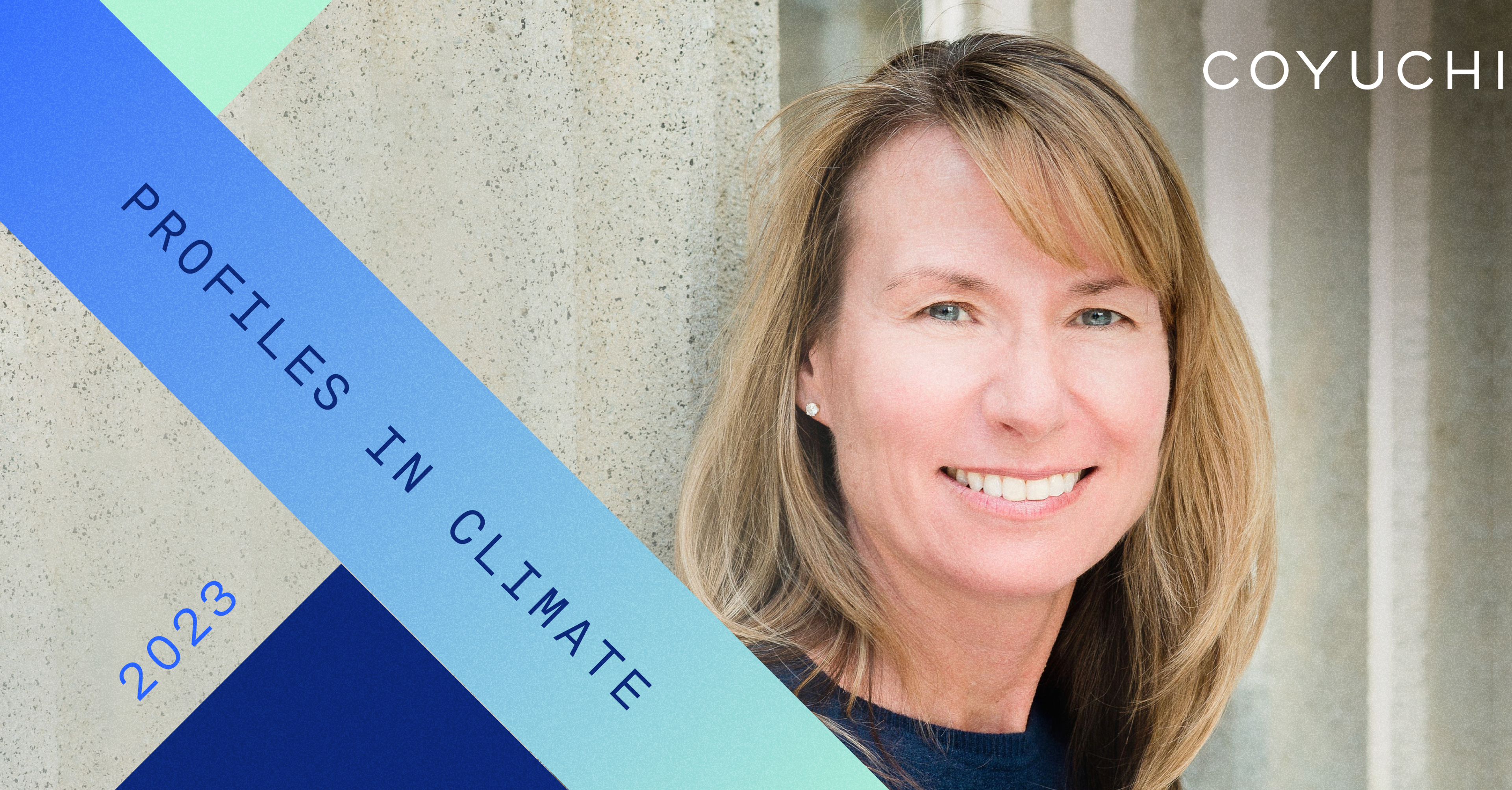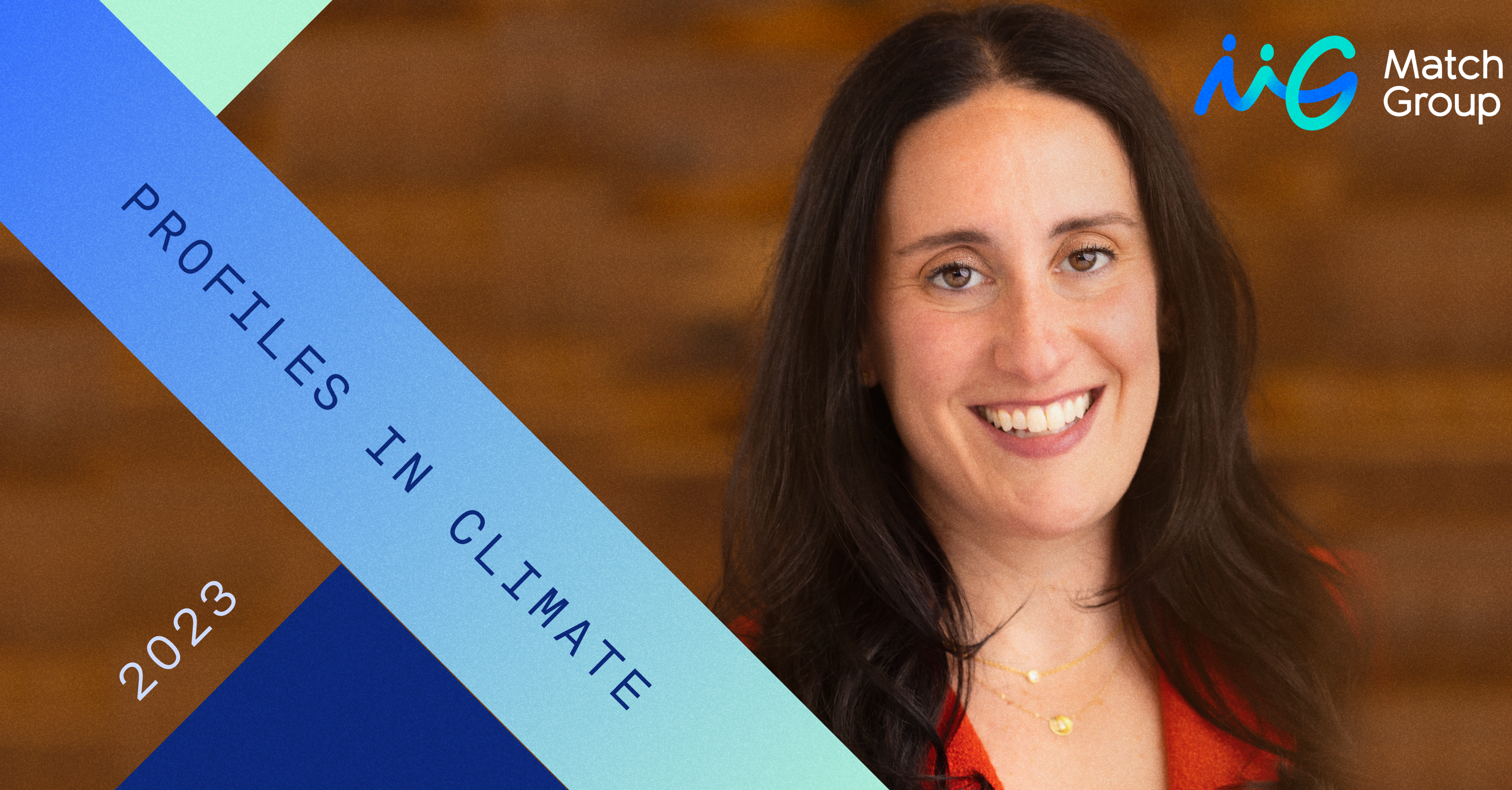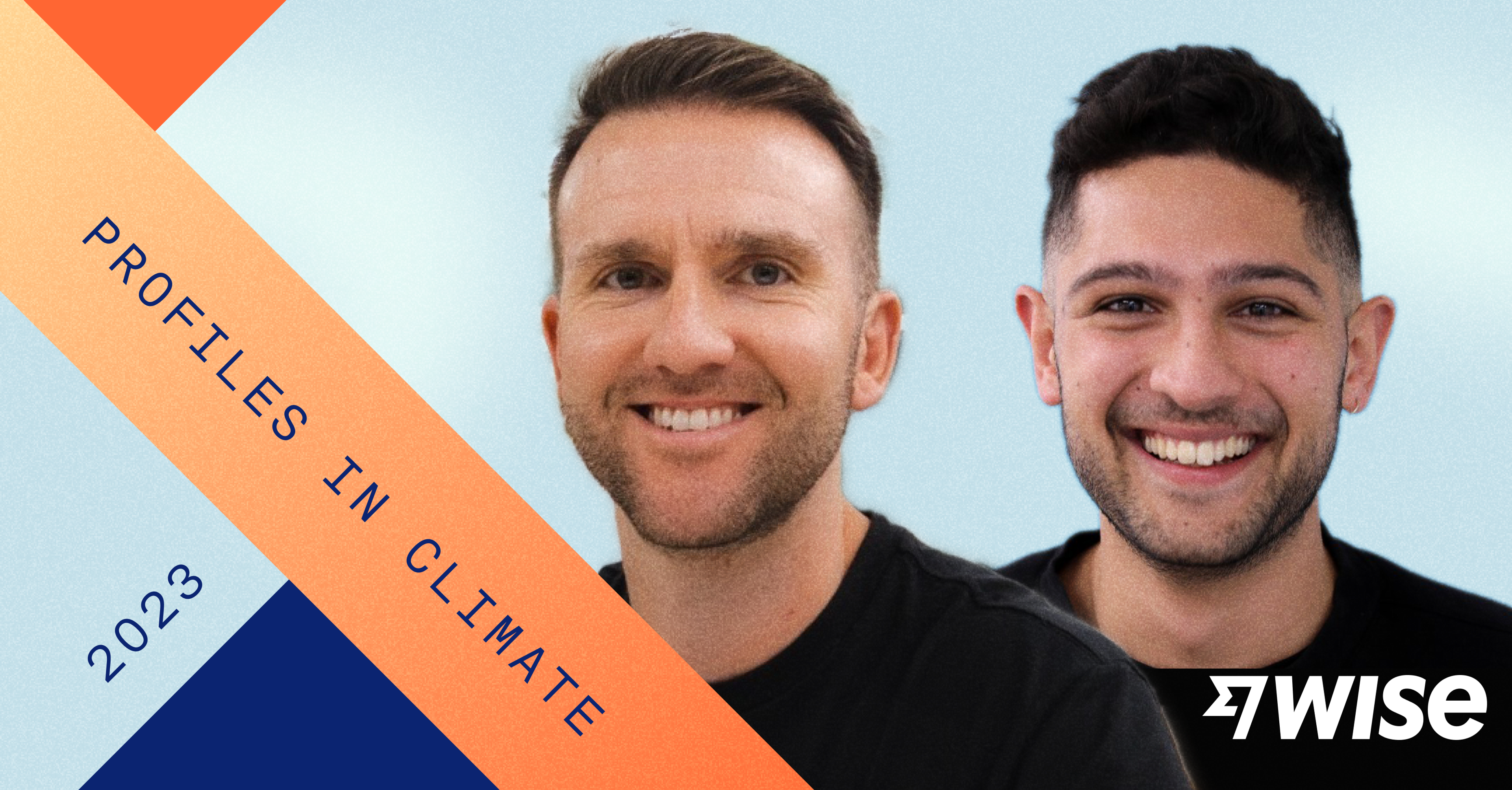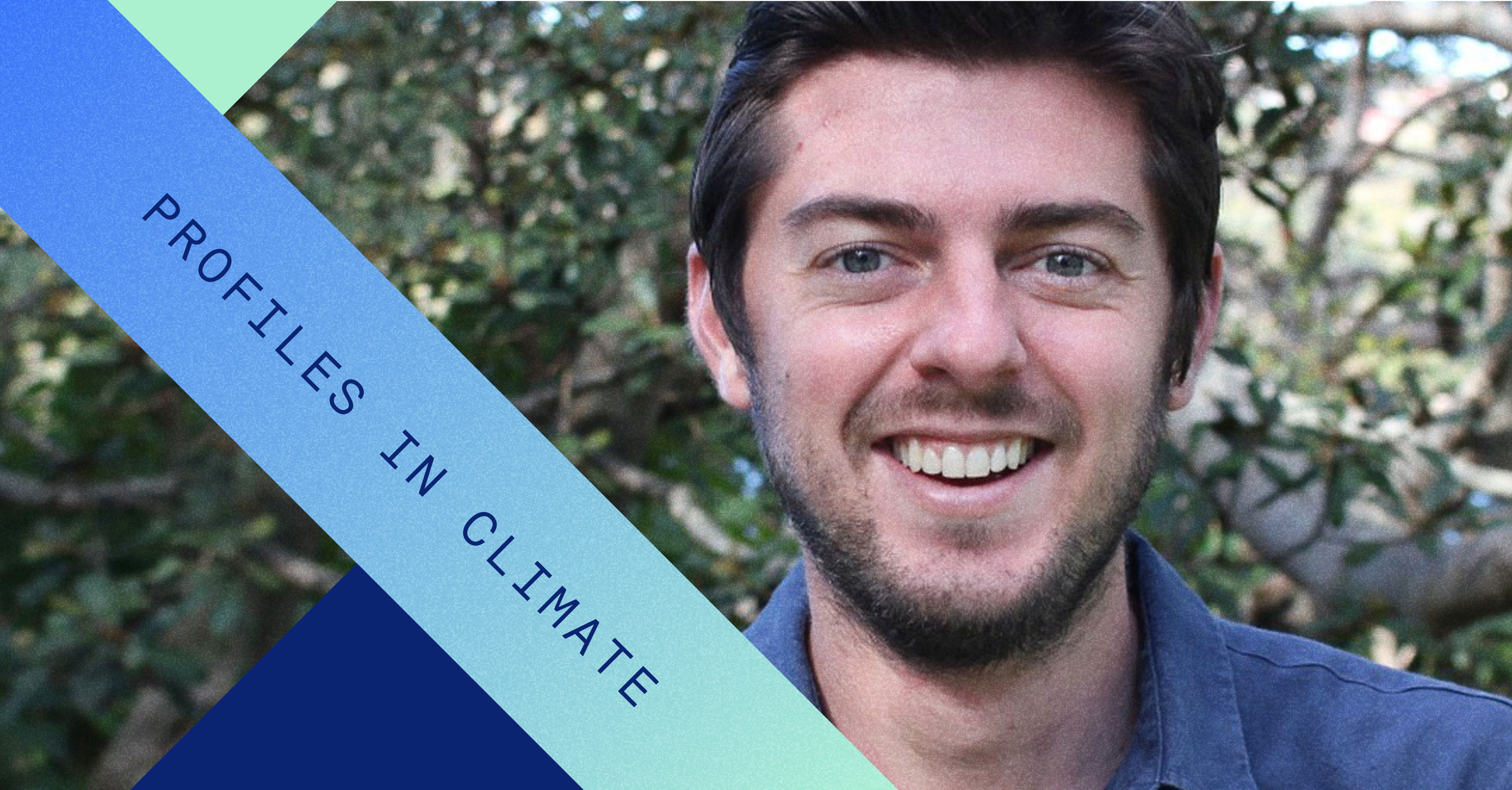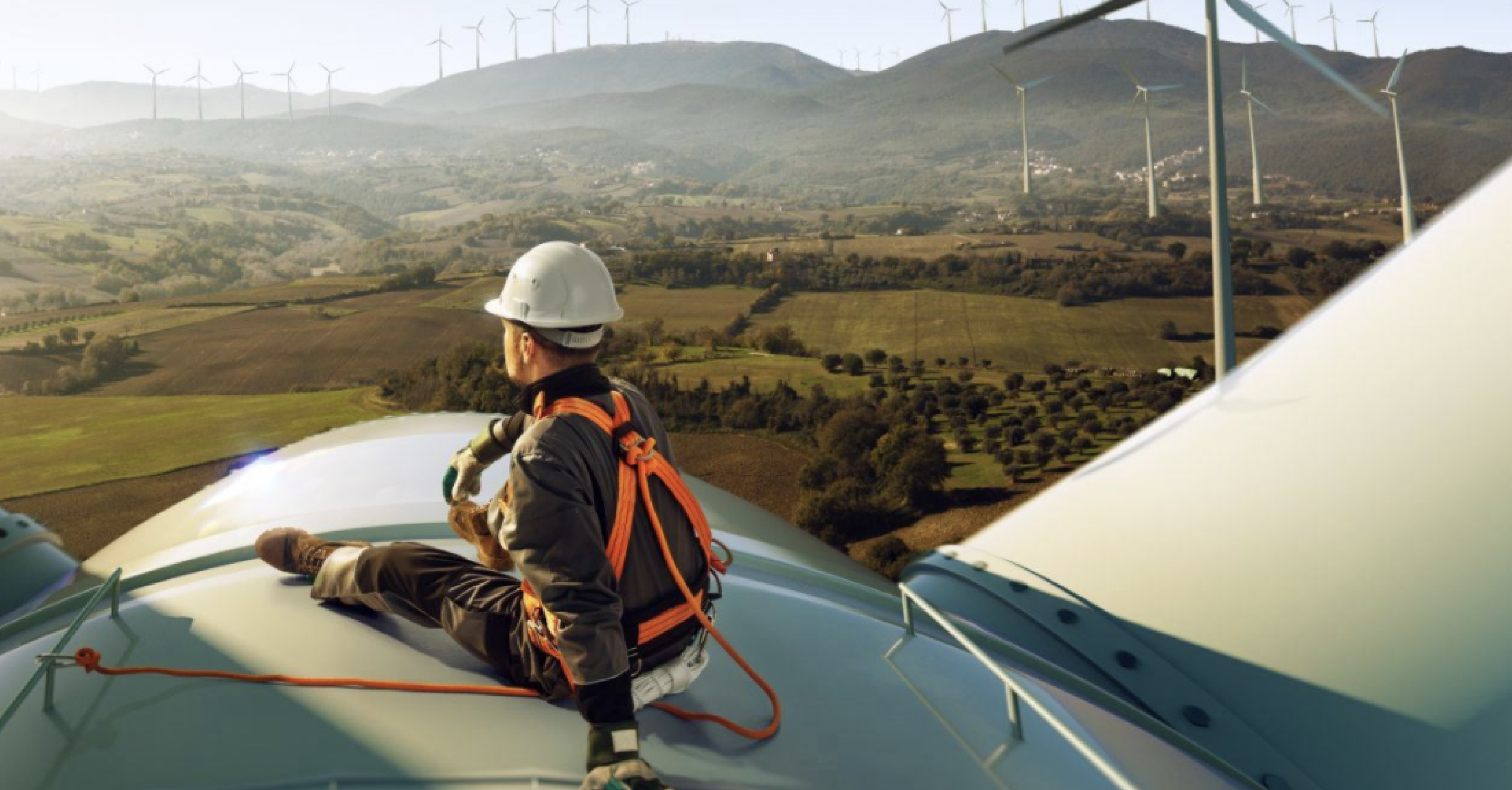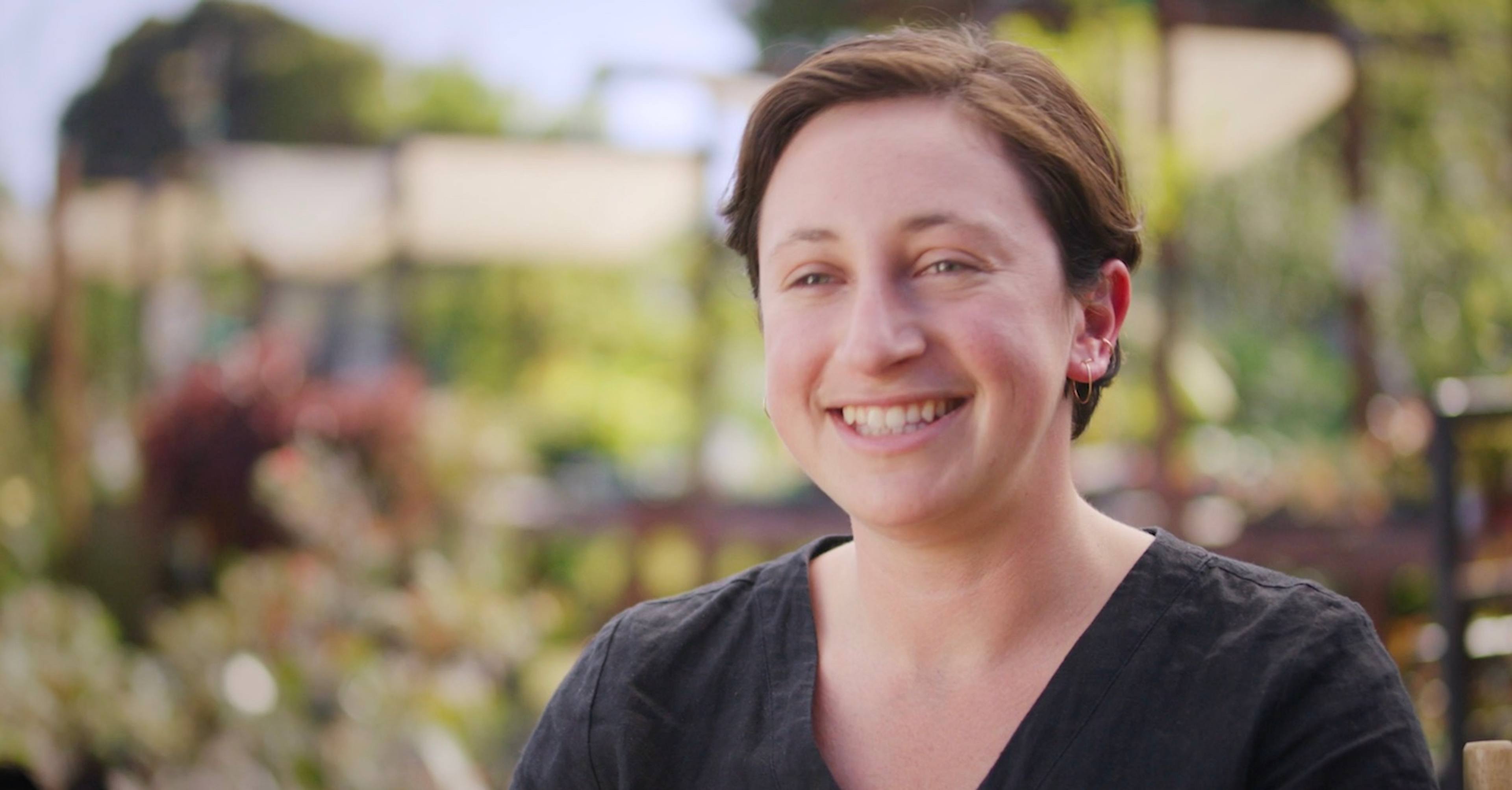“To make our 100-year vision come true, we need to not only make commerce better, but take better care of our planet.”
—Tobi Lütke, Shopify Founder & CEO
It took just fifteen years for Shopify to grow from a few people in a coffee shop to a team of more than 7,000+ people powering over 1.7 million businesses worldwide. But for a company with a hundred-year vision, it’s still early days—and the threat of climate change is looming.
Shopify started work on climate early, and did many of the right first things: mapping out their carbon footprint, converting their offices and cloud usage to renewable power, and buying offsets for corporate travel. They even launched a revenue-based sustainability fund with a starting $5m annual minimum.
But they faced a challenge common to many: their first emissions footprints were limited to generic data, and mostly shared default assumptions about a world in which most employees worked in corporate offices.
Then COVID arrived, and two big insights with it.
#1: The surprising complexity of WFH
Within a couple months of the pandemic’s start, in May 2020, Shopify decided to become a remote-first company:
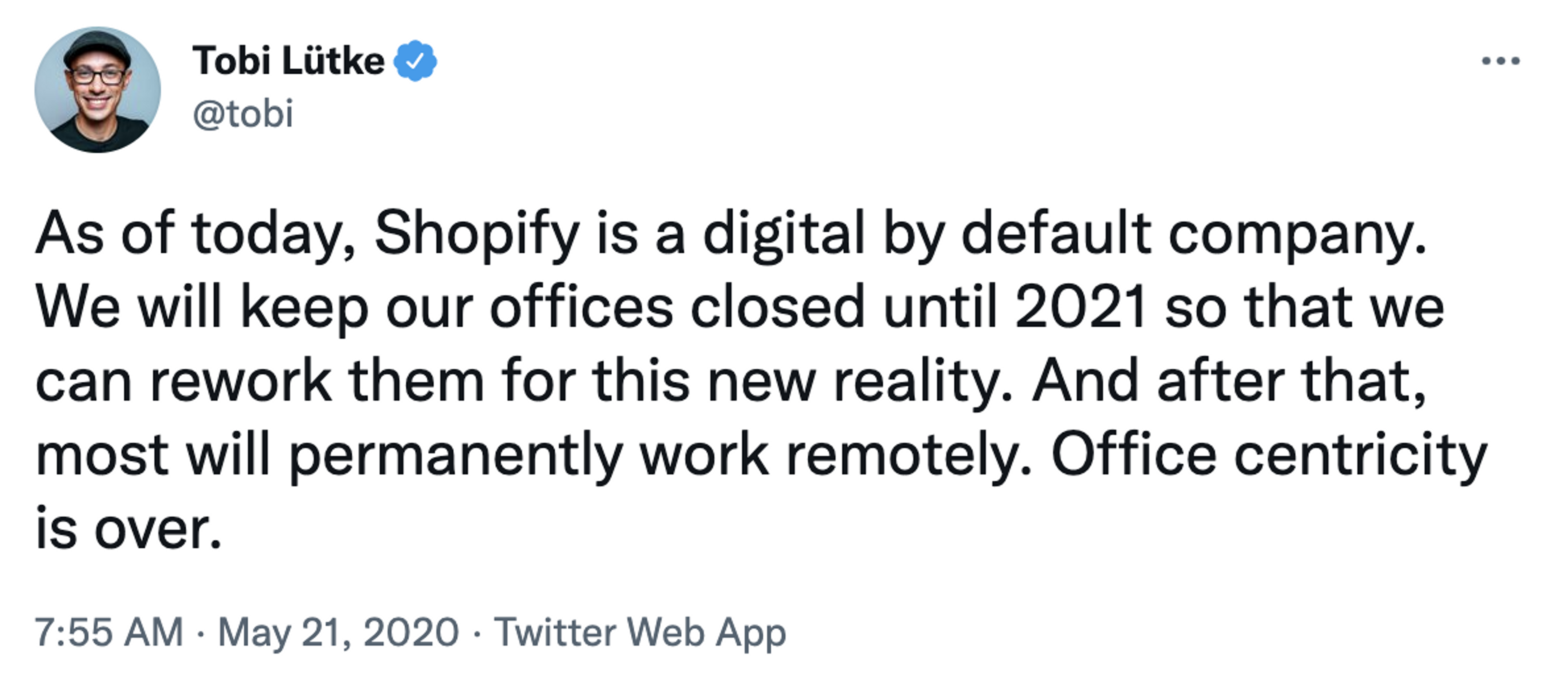
This rendered their traditional carbon inventory—which focused on emissions from physical offices and commutes—nearly obsolete.
In their old way of measuring carbon emissions, the shift to remote-first was an obvious climate win. But Shopify realized these weren’t real-world numbers, and that some emissions were just shifting from buckets they counted to buckets they didn’t. While shuttering large offices was intuitively good for emissions, what about adding over 7,000 employee home offices? Would there still be net reductions after counting everything that old footprints didn’t factor in?
- While employee commutes were already counted, how much carbon would now be spent on flights for in-person offsites?
- What about employees who left their energy-efficient urban apartments for much larger suburban homes—often adding a new vehicle or two along the way?
- Would employees working from home begin to heat or cool rooms outside of their offices in ways they wouldn’t if their houses were sitting empty?
To make sure they were asking and answering the right climate questions, Shopify signed up for Watershed. Within a few weeks, they were using Watershed to analyze their full carbon footprint and run the numbers on different scenarios—all based on specific data about where most employees were moving and how clean the local grids were:
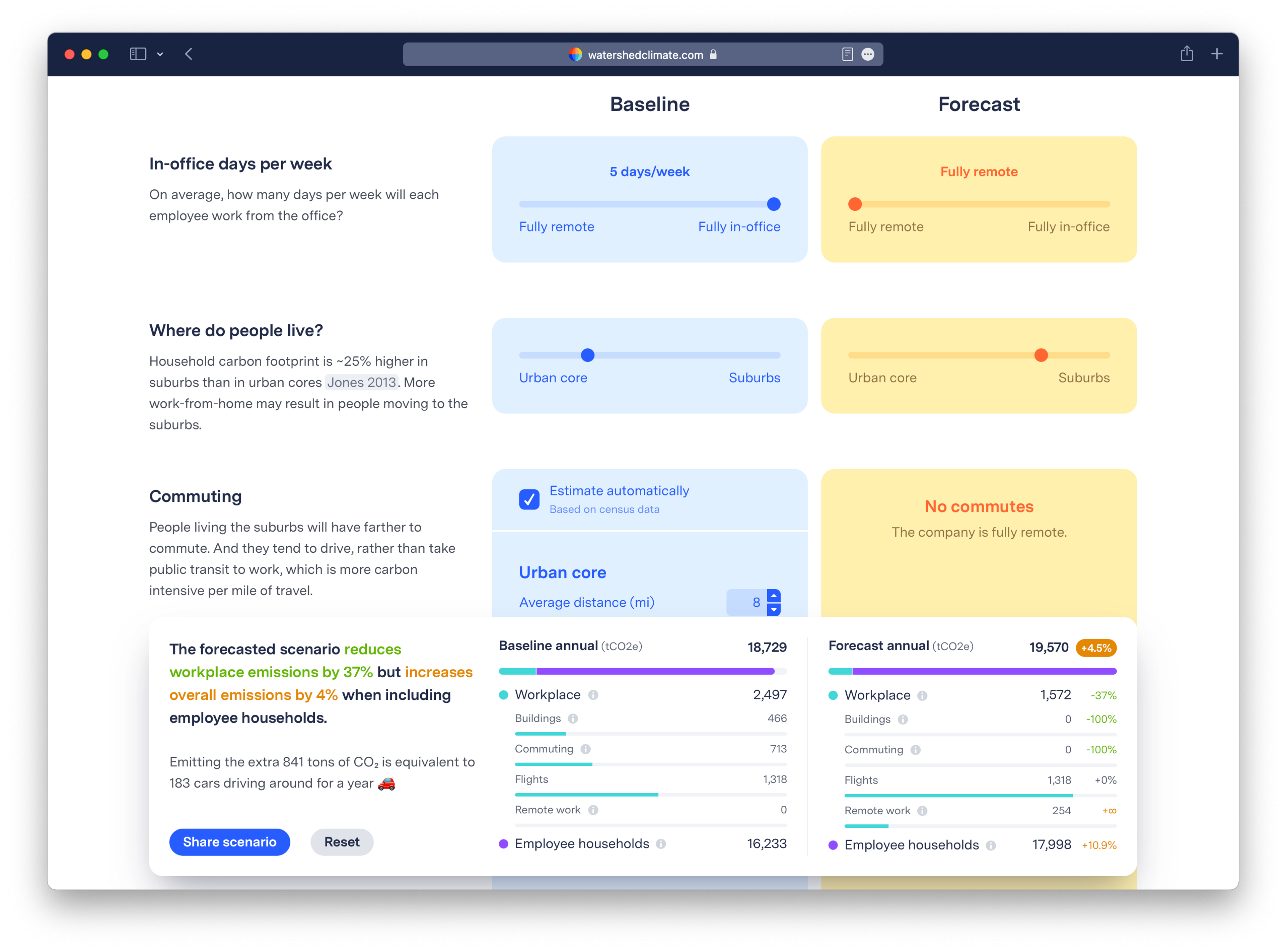
With this data in hand, Shopify was able to identify the right balance points to continue as a climate leader as they shifted to their remote-first work model: digital-by-design.
(For more on this partnership and what sustainability leads should be mindful of in designing climate programs for the remote-first era, The Guardian did their own extended profile.)
#2: The surprising size of the full picture
“As a company truly invested in reversing climate change, we have to consider every impact [along our value chain].”
— Stacy Kauk, Director of Shopify’s Sustainability Fund
As was (and still is) true for most tech companies, there was something else that Shopify’s old measurement tools were leaving out—something far weightier on the carbon scale than how their employees commuted or used air-conditioning: the company’s Scope 3 emissions.
The Greenhouse Gas Protocol—the gold standard for carbon accounting—groups emissions into 3 categories, or scopes. Scope 3 accounts for indirect emissions across the value chain, which often make up to 80% of a product or service’s total carbon profile.
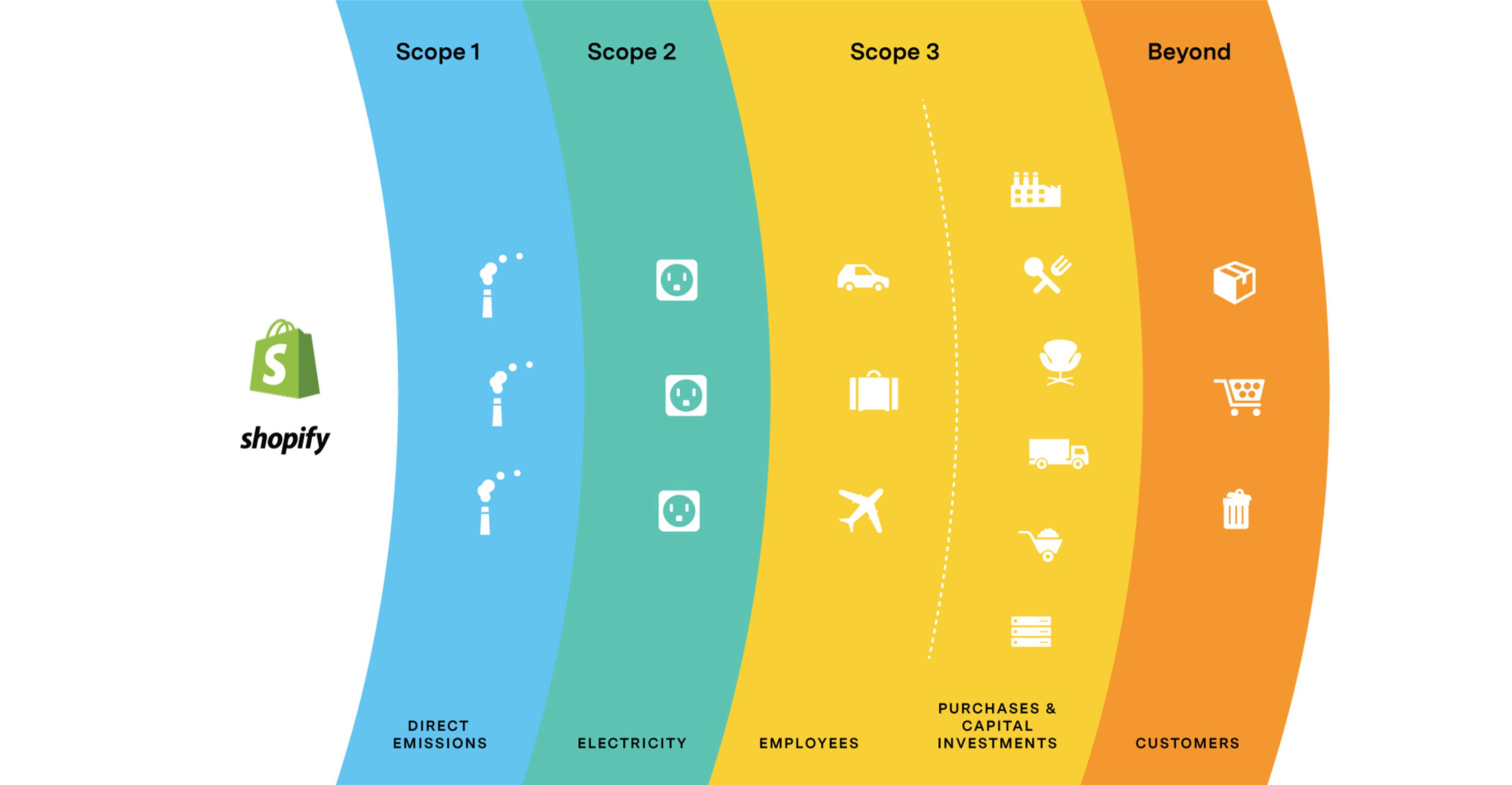
In Shopify’s words, this was “the gnarliest data beast to untangle.” What emissions were coming from Shopify’s purchases from thousands of suppliers? And what was the carbon impact of Shopify merchants shipping goods to consumers? Their traditional carbon inventory, which stopped at the four walls of the corporate office, missed this part of the picture.
Shopify also wanted to approach everyday reductions decisions with more clarity, so they tasked Watershed with an additional project: converting millions of lines of unstructured data covering capital investments, payments, IT infrastructure, and logistics into an x-ray of the full Scope 3 footprint—to as precise a level as the specific makes and models of their servers.
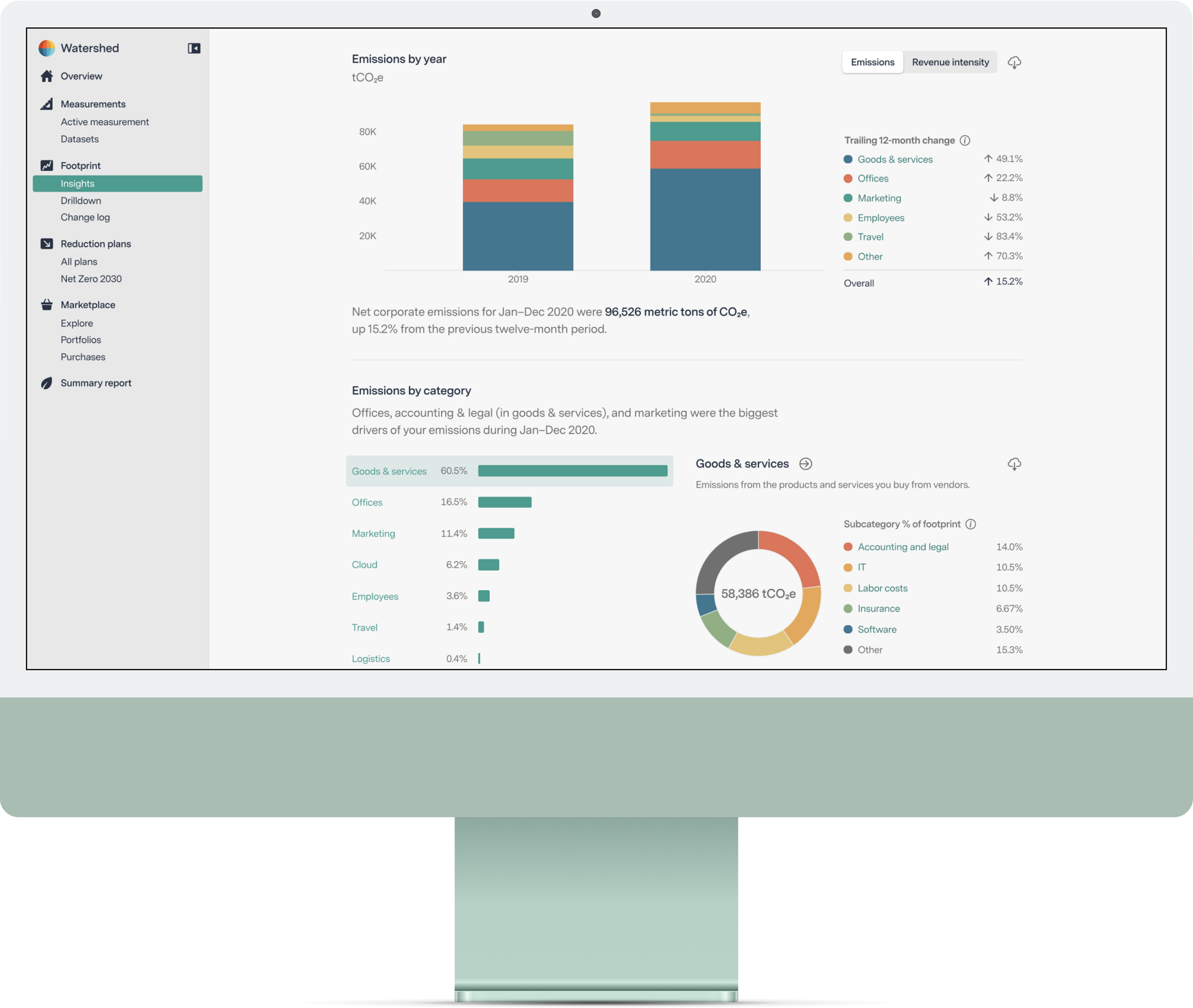
With their Watershed dashboard, Shopify can now generate instant automatic reports, run elaborate reduction scenarios, and get immediate answers based on real data. And they’re able to work with suppliers and teams to factor carbon into dozens of everyday decisions on everything from business travel strategies to the carbon impact of logistics.
“We went from generic industry averages to a live model—built on our actual data—in just a few weeks. And this modelling opened up a thousand new routes to drive down emissions across our value chain.”
— Stacy Kauk, Director of Shopify’s Sustainability Fund
While COVID won’t be the last global curveball to take Shopify by surprise, with Watershed they’re able to massively reduce the time required to judge which response is most consistent with their vision of a prosperous and low-carbon future for all.

